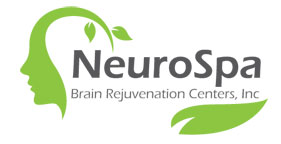Some people are familiar with onabotulinumtoxinA as something that can fight the effects of aging by eliminating facial wrinkles. But onabotulinumtoxinA—also known by its longer and more scientific name of Botulinum toxin—has other applications. Despite being a deadly poison, it can treat symptoms and conditions caused by diseases that affect the nervous system. Here are four neurological conditions treated with onabotulinumtoxinA.
Fighting Migraines
The use of OnabotulinumtoxinA for neurological conditions begins with its application towards fighting the painful effects of migraines. Many medications—from over-the-counter pain relievers to medicines that require a prescription—can lessen migraine sufferers’ pain, but some migraines require treatment with an extra edge. OnabotulinumtoxinA, when injected into parts of the face, neck, and head, can block the sensory neurons that deliver messages of pain to the brain. When these receptors are blocked the degree of pain decreases as the onabotulinumtoxinA treatment interferes with the signal. This can last for up to three months.
Abnormal Muscle Tightness
The second of our four neurological conditions treated with Botox is abnormal muscle tightness, also known as spasticity. Spasticity is one of the more uncomfortable symptoms of neurological diseases. Conditions such as MS, ALS, ALD, and brain and spinal cord injuries manifest as stiff limbs and appendages that don’t allow for normal movement. OnabotulinumtoxinA can be injected near the muscles, once again blocking signals from the nerves that tell the muscles to spasm. This allows them to loosen up and allow for smoother movement.
Dystonia
Dystonia manifests itself as strange and uncontrollable twisting movements in parts of the body. Most often they manifest in the neck or appendages, causing them to turn and twist or perform repeated movements. Patients receive onabotulinumtoxinA injections every few months that can interfere with nerve signals and calm them down (in a matter of speaking.)This reduces involuntary movements as well as any pain caused by dystonia and restores normal movements and ability to function.
Sweating and Drooling
Some neurological conditions and diseases such as Parkinson’s can cause excessive sweating and drooling in patients as their bodies lose the ability to control the production of fluid. Drooling can be combated through Botox getting injected into the salivary glands, causing them to not generate quite so much saliva. Likewise, onabotulinumtoxinA can cause sweat glands to slow down the production of perspiration, leaving patients dryer and more comfortable.
None of these permanent solutions, and a patient will need to report to their healthcare provider for periodic injections. However, slowly the body may regain the ability to control fluid production on its own.


